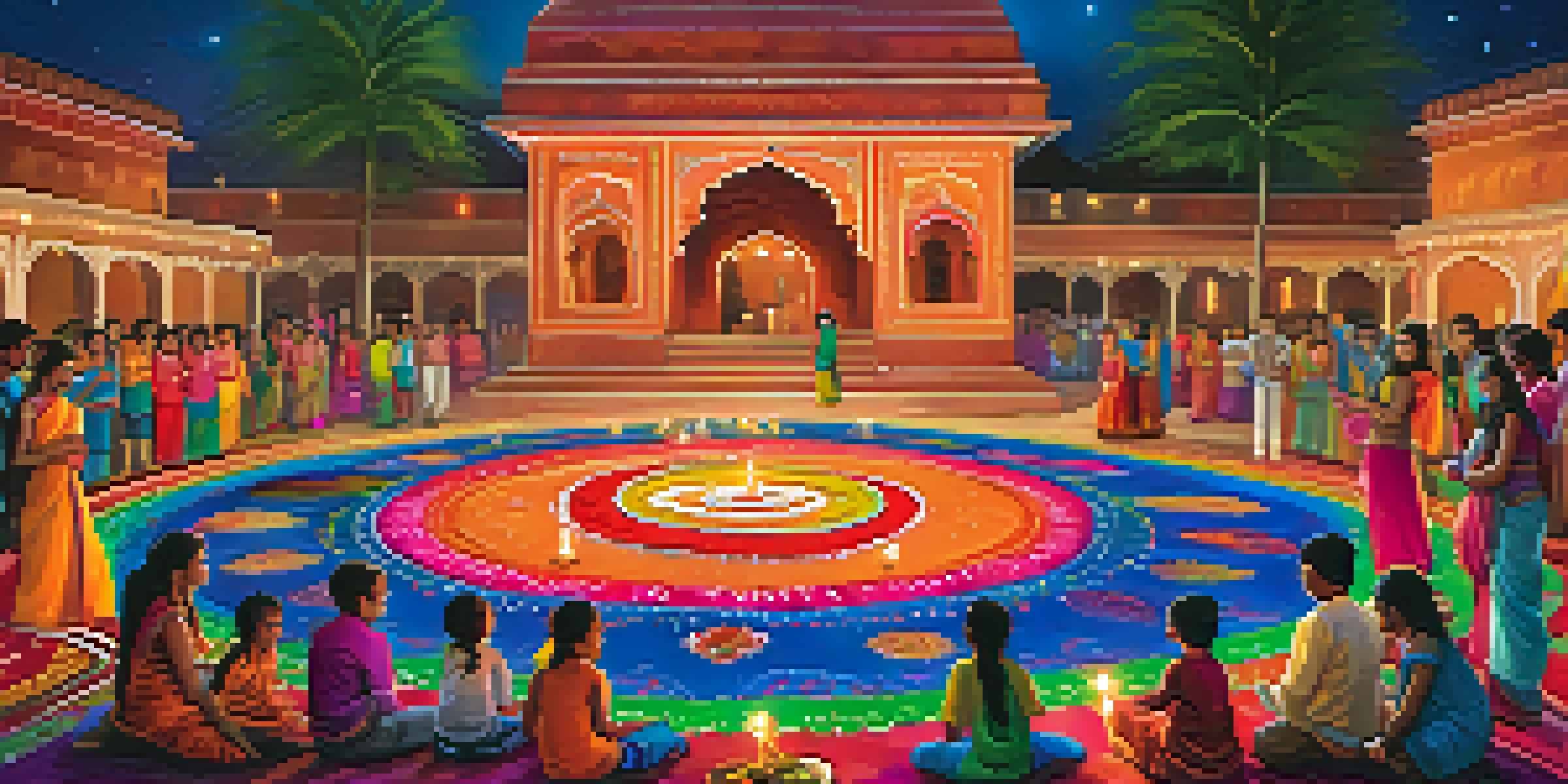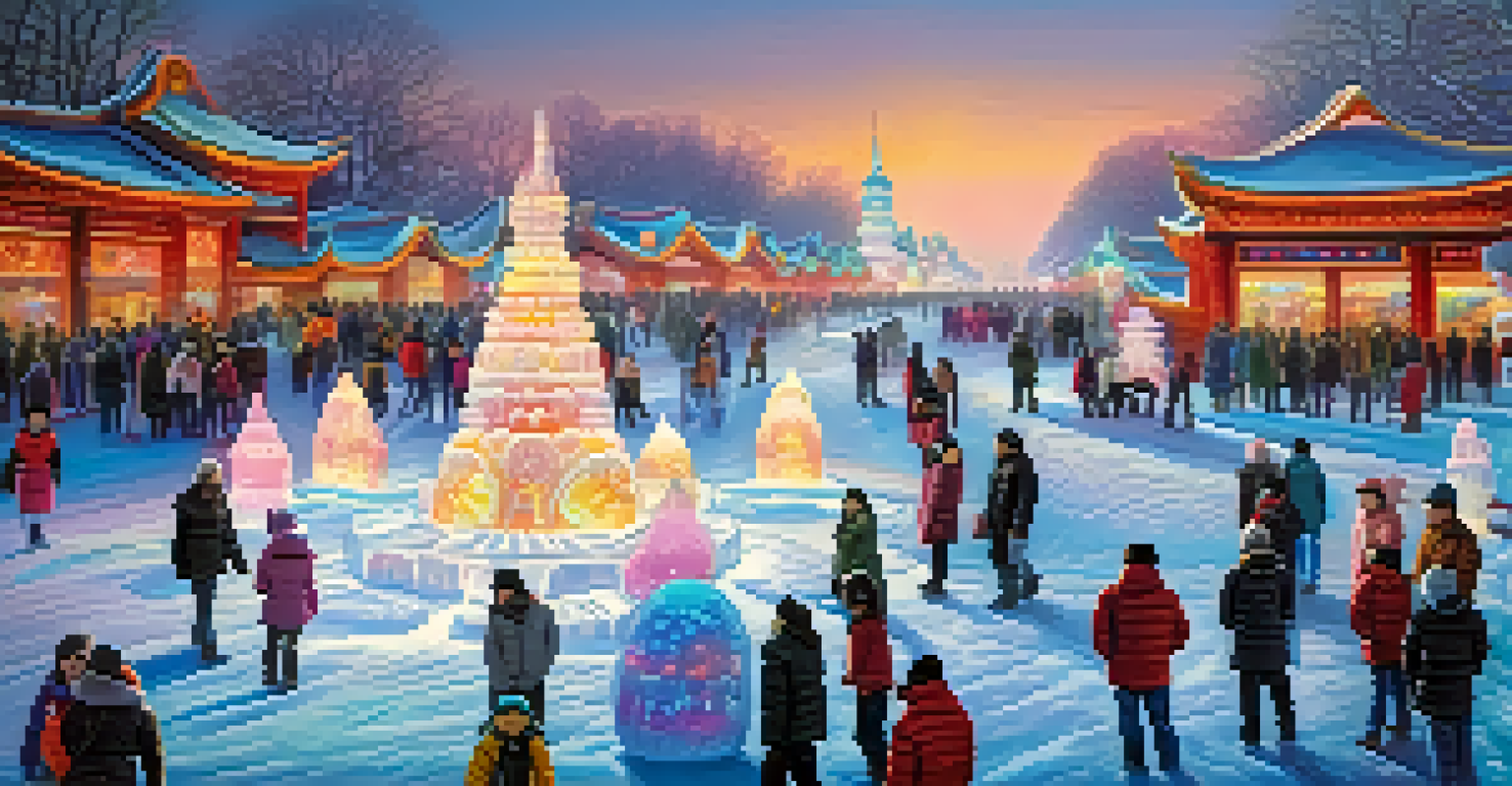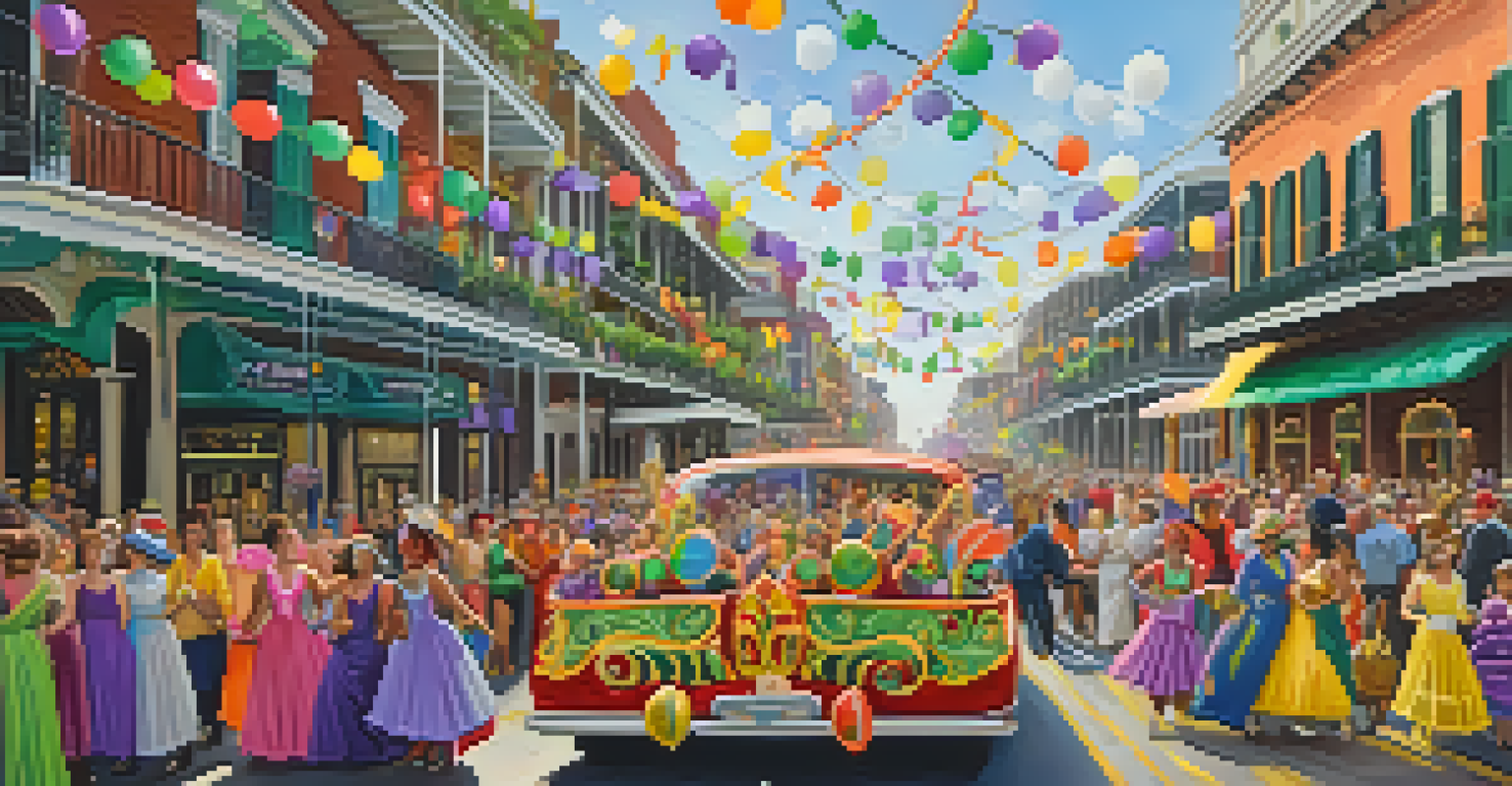Cultural Festivals: Celebrating Local Traditions Worldwide

Understanding Cultural Festivals and Their Significance
Cultural festivals are vibrant celebrations that showcase the unique traditions of different communities. They serve as a mirror reflecting the history, values, and artistry of a culture. By gathering people around shared experiences, these events strengthen community bonds and foster a sense of belonging.
Festivals are a time to connect with our roots and celebrate the diversity of our cultures.
For instance, the Diwali festival in India celebrates the victory of light over darkness and good over evil. Similarly, the Rio Carnival in Brazil is a spectacular display of music, dance, and color, drawing millions to revel in the joyous atmosphere. Each festival tells a story, making them vital to cultural preservation.
Moreover, these festivals are often a blend of ancient customs and contemporary practices, creating a dynamic space for evolution and innovation. They invite people from different backgrounds to come together, promoting cross-cultural understanding and appreciation. In essence, cultural festivals are the heartbeat of a community.
Exploring Major Cultural Festivals Around the World
Around the globe, cultural festivals vary in form and significance, each reflecting the local traditions and values. For example, the Harbin Ice Festival in China transforms the city into a winter wonderland, featuring massive ice sculptures and breathtaking light displays. It's a testament to human creativity and perseverance in harsh climates.

In contrast, the Holi festival in India, known as the Festival of Colors, is a joyous celebration of spring that involves throwing colored powders and water at one another. This event symbolizes love and the arrival of brighter days, drawing crowds eager to partake in the fun. Festivals like these highlight the diversity in celebration styles.
Cultural Festivals Strengthen Community
These vibrant celebrations enhance community bonds by showcasing unique traditions and fostering a sense of belonging.
From the vibrant Mardi Gras in New Orleans to the solemn yet beautiful Day of the Dead in Mexico, each festival offers a unique glimpse into the soul of its culture. They allow participants to engage with traditions that may have been passed down for generations, fostering a deeper connection to their heritage.
The Role of Food in Cultural Festivals
Food often plays a central role in cultural festivals, serving as a vehicle for tradition and community bonding. Many festivals feature signature dishes that are deeply rooted in local history. For instance, the Oktoberfest in Germany is not just about beer; it’s also a celebration of traditional Bavarian foods like pretzels and sausages that pull people together.
Food is a universal language that brings people together, especially during celebrations.
Similarly, during the Lunar New Year celebrations, families gather to prepare and share symbolic foods such as dumplings and fish, which represent prosperity and abundance. These culinary traditions not only satisfy the palate but also reinforce cultural identity and familial connections.
Food brings people together, encouraging communal experiences and shared stories. In many cases, it’s the flavors of a festival that linger long after the celebrations end, creating lasting memories and a profound sense of belonging among participants.
Art and Performance: The Heart of Cultural Festivals
Art and performance are integral to cultural festivals, showcasing the artistic expressions of a community. From traditional dances to theatrical performances, these elements breathe life into festivals and engage audiences in profound ways. For example, the Edinburgh Festival Fringe celebrates a wide array of artistic talents, making it the largest arts festival in the world.
Local artists often use festivals as a platform to share their work, gain recognition, and connect with audiences. Whether it's a tribal dance performed during the Inti Raymi in Peru or a classical music concert at the Salzburg Festival, these performances create a rich tapestry of cultural expression.
Food: A Central Festival Element
Culinary traditions play a vital role in cultural festivals, bringing people together and reinforcing cultural identity.
Moreover, festivals encourage collaboration among artists, fostering innovation and the blending of different cultural influences. This not only keeps traditions alive but also paves the way for new artistic forms, ensuring that cultural festivals remain relevant and engaging across generations.
The Impact of Cultural Festivals on Local Economies
Cultural festivals often serve as significant economic drivers for local communities. They attract tourists, generate revenue, and create jobs, making them vital to the economic health of a region. For instance, the Albuquerque International Balloon Fiesta draws thousands of visitors annually, boosting local businesses and promoting tourism.
Beyond direct financial benefits, festivals promote local artisans and vendors, allowing them to showcase their products and crafts. This exposure can lead to increased sales and long-term growth for small businesses, helping preserve traditional arts and crafts that may be at risk of fading.
Additionally, the influx of visitors provides opportunities for cultural exchange and learning, enriching the community's overall experience. By investing in and supporting these festivals, local governments and organizations can ensure their cultural heritage thrives while also bolstering the economy.
Cultural Festivals: A Platform for Social Issues
In recent years, many cultural festivals have begun to address social issues, using their platform to raise awareness and promote change. For example, the Pride Parade celebrates LGBTQ+ rights and visibility, fostering acceptance and inclusivity within communities. Festivals like these not only entertain but also educate attendees about important social matters.
Additionally, environmental sustainability has become a focal point for many cultural festivals. Initiatives such as waste reduction and eco-friendly practices are being implemented to minimize their carbon footprint. Events like the Glastonbury Festival in the UK have made strides in promoting sustainability, encouraging attendees to engage in responsible behavior.
Festivals Address Social Issues
Many cultural festivals now advocate for social change, using their platforms to raise awareness on topics like LGBTQ+ rights and sustainability.
By addressing social issues, cultural festivals become catalysts for dialogue and action, inspiring participants to reflect on their values and commitments. This evolution highlights the growing importance of festivals as spaces for advocacy, not just celebration.
The Future of Cultural Festivals in a Globalized World
As globalization continues to shape our world, cultural festivals are evolving to reflect this interconnectedness. While they celebrate local traditions, they also embrace influences from diverse cultures, creating a rich mosaic of experiences. This blending can lead to innovative traditions that resonate with younger generations seeking to connect with their heritage.
Virtual festivals have also emerged, making cultural celebrations accessible to a global audience. This shift allows people from all corners of the world to partake in experiences they might not have the opportunity to attend in person. The digital realm opens up new avenues for creativity and participation, expanding the reach of cultural festivals.

However, as cultures blend, it’s crucial to preserve the authenticity of traditional practices. Balancing innovation with respect for heritage will be key to ensuring that cultural festivals continue to thrive and resonate with future generations, maintaining their significance in a rapidly changing world.